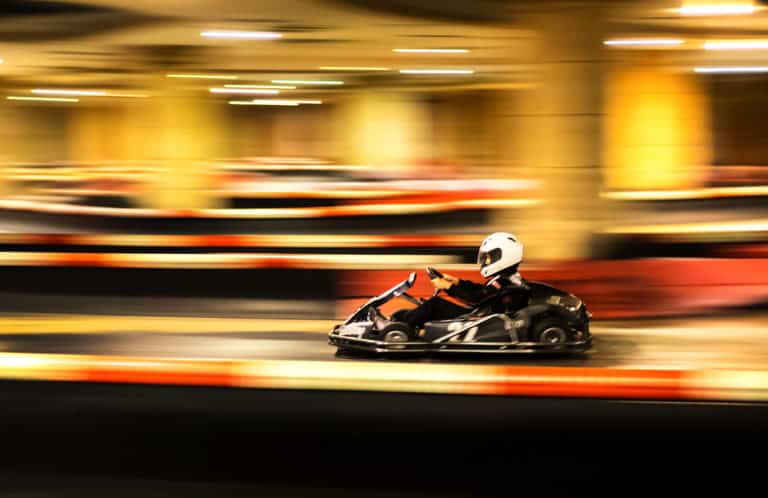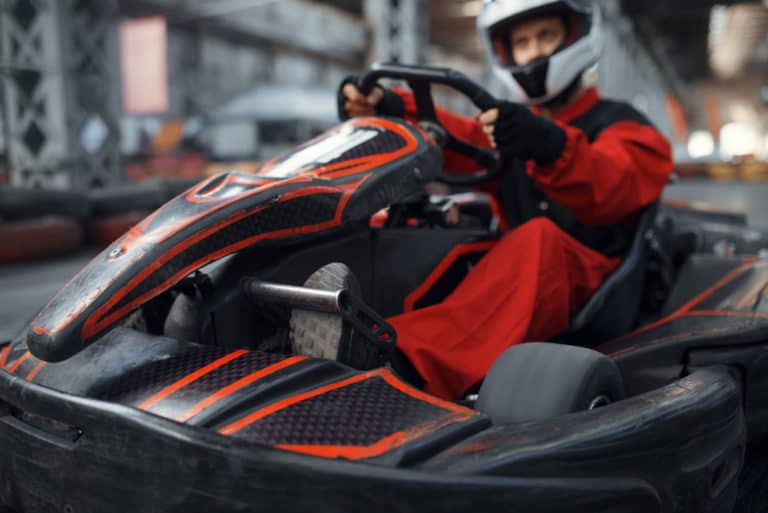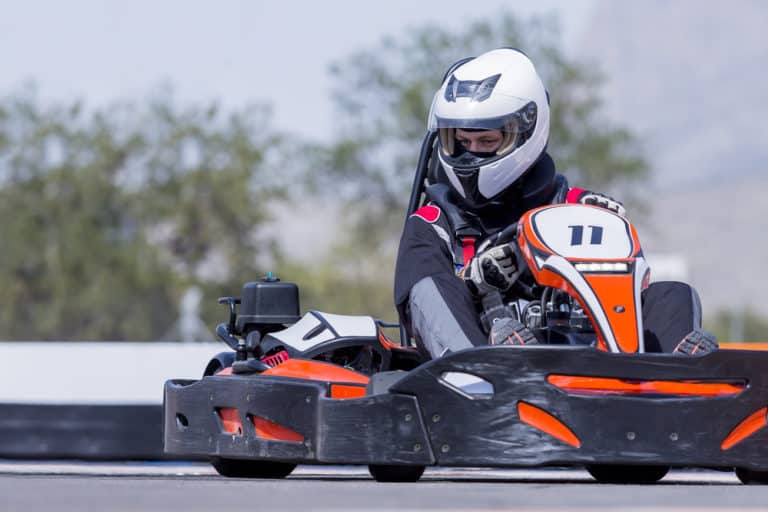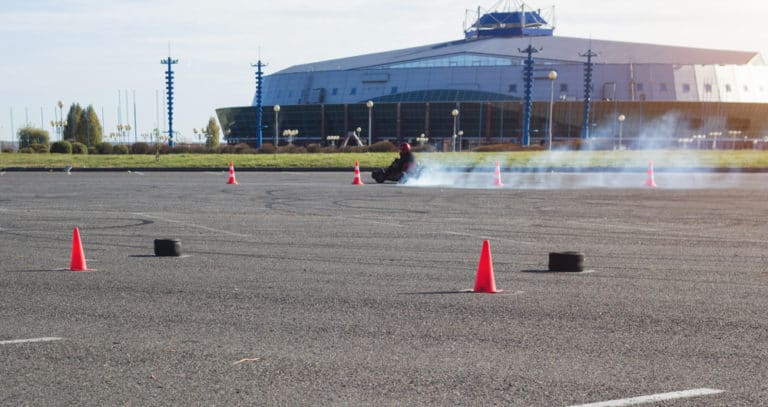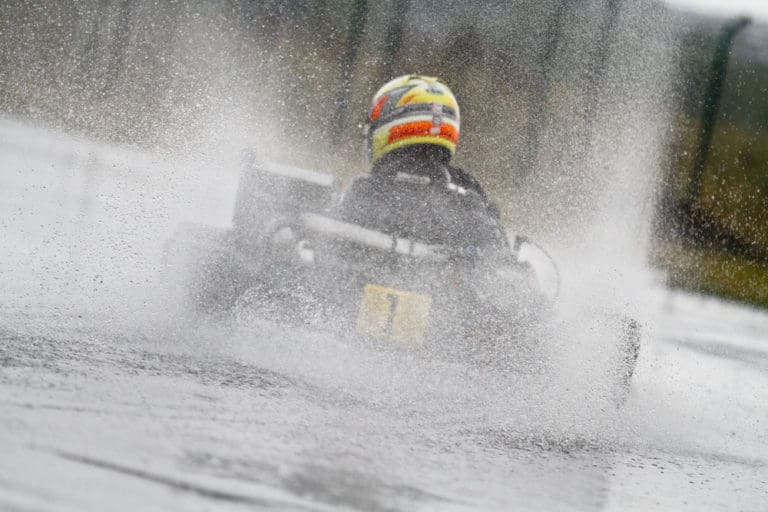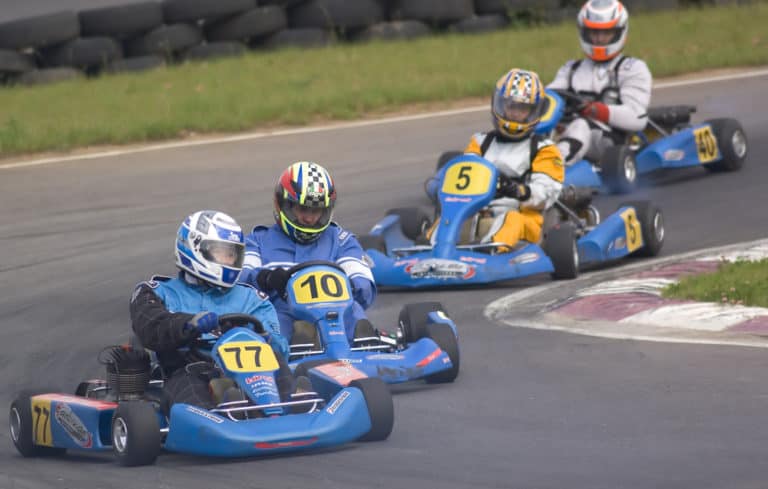Whether you are building or buying a go-kart, the frame is probably the most important component in the design. Buying from a reputable go-kart manufacturer will nullify any frame concerns, but what if you build it yourself? Doing some research was important to me in finding out the best frame for my go-kart.
The best frame for a go-kart is stiff enough to handle turns, not break, and flexible enough to work as a suspension. Frames made out of AISI 4130 low-alloy steel are widely considered the best frames due to the steel’s high yield strength, hardness, and tensile strength.
This article will discuss the best frame regarding different types of go-karts, driving conditions, and materials used to build a frame.
What Are The Best Frames For A Go-Kart?
The best frame for a go-kart is one that has the correct balance of stiffness as well as flexibility. Go-kart frames are welded together with torsion bars. The length of these bars dictates the overall stiffness of the frame. The longer the torsion bars, the less stiff the frame will be.
Choosing the best go-kart frame can be a tricky exercise. What makes it tough is that there are so many types of go-karts, together with a large number of materials, that you can choose from. If you choose the wrong kind of frame and over-engineer the chassis, it could impact the weight and performance of the kart.
There are four types of frames for go-karts, and is classified as follows in the United States:
- Caged Frames: These are go-kart frames that incorporate a roll cage or roll-over bar in their design.
- Straight/Open Frames: These frames allow the driver to sit in the middle of the kart (sprint races.)
- Offset Frames: These frames incorporate the driver sitting on the left-hand side of the kart (speedway racing on oval tracks that only have left turns.)
The very short and easy answer to this question is that the best go-kart frames are made out of steel, and steel is also the most common material used when constructing a frame structure. Steel frames are considered your best bet when choosing what type of frame to install, especially when discussing racing go-karts. There are different types of steel on the market, so don’t buy just any steel, thinking that it will work as a frame.
The best frames for a go-kart will be the ones that are designed and sold by the professionals, the best one that is self-build will be the one that is built with the best materials, the one that properly fits all the mechanical elements and the one that does not break due to stiffness. Flexibility in the frame is key.
5 Best Frames/Chassis For Racing Beginners
The following frames and chassis are the best in each of the subsequent racing classes, according to Redbull:
| Class | Frame/Chassis |
| Bambino Class (Ages: 6-8 Years) | Zip Kart |
| Cadet Class (Ages: 8-13 Years) | Synergy |
| Junior Class (Ages: 11-17 Years) | Compkart/Fullerton |
| Senior Class (Ages: 16+ Years) | OTK/Tonykart |
| Short Circuit Gearbox Class (Ages: 16+ Years) | Sodikart |
What Is The Best Material When Building A Go-Kart Frame?
If you are considering using your go-kart to race and building yours instead of buying one, then the material you decide to use in its construction is very important. The strength of your frame dictates your performance on the track when it comes to cornering. Always remember that a rigorous track will require a flexible chassis.
Racing go-karts are high-performance vehicles, and their primary function is to win races. Racing frames are usually lightweight and tubular (rectangular) in their design. The CIK-FIA dictates that a racing go-kart frame should be made from “magnetic steel.”
The best materials to use are either AISI 4130 or AISI 1018 alloy steel:
| Alloy Steel | AISI 4130 | AISI 1018 |
| Tensile Strength | 560 MPA | 440 MPA |
| Yield Strength | 460 MPA | 316 MPA |
| Hardness | 217 HB | 126 HB |
AISI 4130 (low alloy steel)
- It contains 1% chromium and 0.2% molybdenum which are strengthening agents and is generally accepted as the best material to use when building a go-kart frame.
- It has the highest tensile strength, yield strength, and hardness to ensure the frame’s structural integrity. However, the above-mentioned comes at a steep price compared to other materials.
When racing is your reason for getting into go-karting, you should buy the kart from a reputable go-kart manufacturer. Go-karts frames that are weak in design, or built with cheap materials, are prone to sliding, drifting, and breaking when going into turns. When a go-kart is not planted to a track, it is also prone to flipping when driven carelessly or in a hard fashion.
If you want to build a go-kart for recreational use, then there are other materials that you can use to create your perfect frame, and it does not cost as much as AISI 4130 alloy steel:
| Frame Material | 304 Stainless Steel | Aluminum Alloy |
| Tensile Strength | 505 MPA | 310 MPA |
| Yield Strength | 215 MPA | 276 MPA |
| Hardness | 200 HB | 70 HB |
You can purchase frames pre-welded or un-welded. Proper welding is an essential part of creating the best frame for your go-kart. The traction of your go-kart’s tires also plays a massive role when it comes down to how well your frame functions. A general lack of traction on your tires will lead to uneven weight distribution and overall stability on your frame, which can cause rattling and breakage.
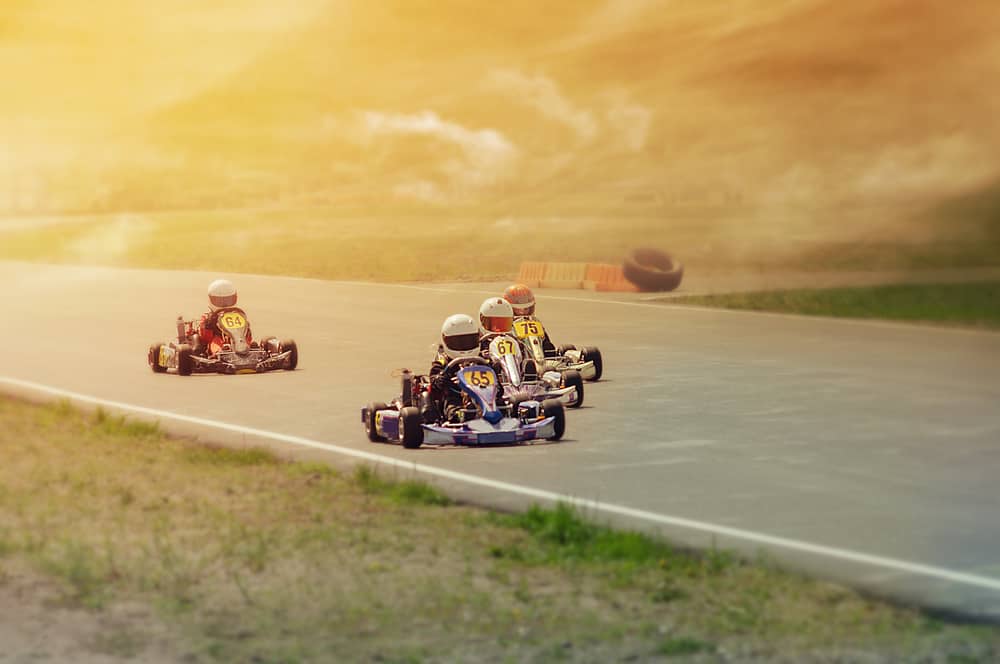
What Frame Type Is The Most Commonly Used?
The most common engine used in go-karting is the Yamaha KT-100 (two-cycle), and going with a frame that fits this engine will be a good option when choosing a frame. Think of a frame simply as different parts keeping a component together (normally via steel tubing.)
A frame is generally constructed by welding torsion bars together and fixing them to the axles:
- Stiff Frames: Are a result of shorter tension bars crossed together. Stiff frames are a staple of two-cycle and four-cycle engines.
- Flexible Frames: Are associated with longer tension bars in their design. Flexible frames are generally used when inserting higher horse-power engines in a go-kart.
Some go-kart chassis can allow you to change the frame’s stiffness by adding or removing stiffening bars on the front, rear, and sides of the kart. The option to change the stiffness is an awesome way to set up your go-kart to what the conditions demand when it comes to dirt, asphalt, wet, and dry conditions. These adjustable frame types are usually the best option when constantly driving on different terrains and settings.
What Is The Best Frame Set-up For A Dirt, Asphalt, And Concrete Surface?
Choosing the best frame for your go-kart can largely depend on the type of surface that you will be riding on. Whether you drive on asphalt, dirt, or concrete, frames behave differently according to the surface:
- Dirt Track: Frame should consist of a short front rail and a longer back rail. Dirt tracks place enormous stress on the front rail, and a too stiff back rail can cut power to the engine while taking a turn.
- Asphalt/Concrete Tracks: Frame should consist of a frame set-up with a shorter back rail and a longer front rail, as this is the best frame set-up for this type of surface.
- Dry Track: Should have a more stiffish frame set-up.
- Damp Track: A flexible chassis works best in these conditions.
Conclusion
The best frame for your go-kart will be one that is built with the best material, constructed to handle adverse driving conditions, stiff (durable) but also flexible. The type of go-kart will also guide you in the best frame for that type of vehicle.
The surface type will determine how the frame should be constructed, as a frame that works on asphalt might not work when you hit the dirt roads. Wet and dry conditions also require different set-ups.
If your budget allows it, then opt for AISI 4130 steel when building your frame, as this is the best material for a frame available. Finding the balance between too stiff and too flexible is something that you will perfect by riding your go-kart.

